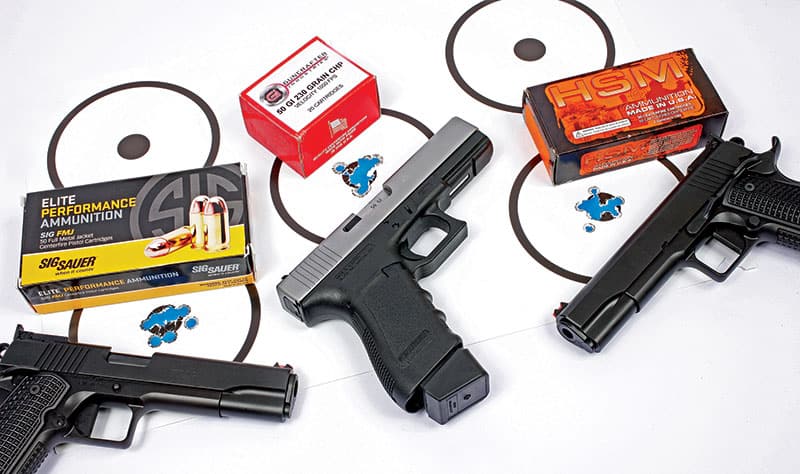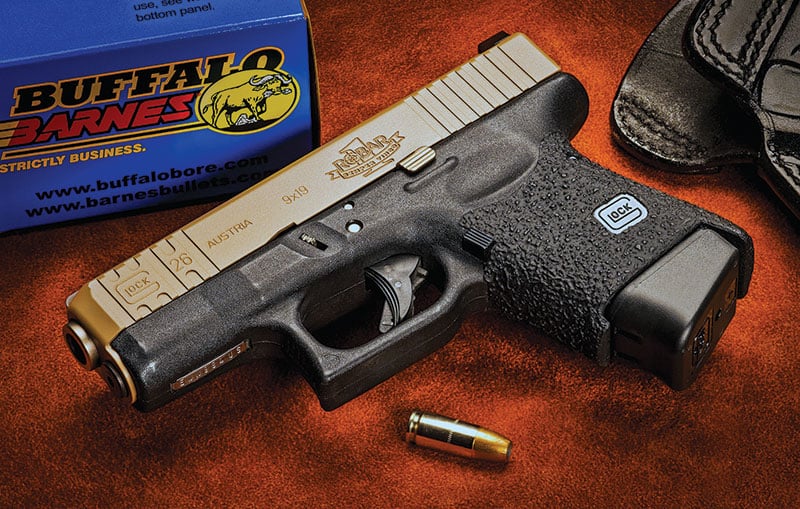Shot Placement Vs. Power
If This Then... What?
The recent resurgence of the 9mm, including its re-adoption by the F.B.I., has brought us back into the everlasting debate about its effectiveness for personal defense. The argument stretches back over a century to the Thompson-LaGarde tests in 1904 when it was first officially found “inadequate.” Bullets have come a long way, and the modern 9mm JHP is not the 115-grain ball round of yore.
Naturally, this leads to some truly entertaining online snark battles, where 9mm supporters often resort to saying, “It all comes down to shot placement,” as though this ends the discussion. This is correct — bullets that don’t hit important things probably won’t count — but it doesn’t tell the whole story.
It should be obvious shot placement alone, without reference to the projectile, is not adequate to stop someone bent on killing you. Most of us don’t think a .25 Auto can be relied on for a one-shot stop, even if put in the “right” place. It happens, but not reliably. We also don’t assume the same about the .22 Short, 4mm rimfire, pellets from a .177 CO2 pistol or 6mm airsoft BB’s. Shot placement matters, but so does the projectile. Col. Cooper argued the projectile was the most important part of any weapon platform. Far from ending the discussion, this is really where the question of adequacy starts. And adequacy applies to both the bullet and the shooter.
While we should all work hard to place shots precisely, it’s a serious leap to assume you’ll always be able to deliver flawless shot placement under stress, no matter how good you may be on the range. It comes down to the difference between shooting offensively — and defensively. Hunting, for example, is offensive shooting. You pick the ground on which you intend to ambush and shoot the animal, you select the rest you want to use to support your rifle and you can wait for the shot you want, or even choose not to take it, with no real consequences. It’s entirely different from walking into your kitchen at 3:00 AM and immediately getting charged by someone who snatched a butcher knife off your counter. And oh, he’s high on meth.
Can You Hit?
Lots of poachers kill deer with a .22, but would it really be your first choice? They have the advantage of setting up their shot. You don’t. While it is possible to gain a momentary advantage once someone has the drop on you, remember self-defense is a response to a fight someone else started — and you can’t avoid. Your attacker picks when and where and how many people they’ll bring with them. Their actions generally determine what kind of shot you get, or if you get one at all.
There are exceptional people who can make those precise shots, but that’s not most of us. Since we’re talking about hunting, W.D.M. “Karamojo” Bell, an early ivory hunter of African lore, was famous for killing elephants with a rear brain shot using rifles as small as .256 caliber, which some of us consider a little light even for whitetail. He could also shoot birds on the wing with a rifle, hitting 60–80 percent. Bell’s biographers say up to a hundred hunters have gotten themselves stomped to death trying to copy his small-caliber shots on dangerous game, because they couldn’t make the shots he could. He was the exception — the dead hunters are the rule.
Is It 9mm Vs. 45?
With this in mind, you need to ask whether the pistol you carry will do the job without a surgically placed shot. If you don’t think it will, consider something with more power. On the other hand, if you carry a pistol with so much recoil you can’t place an accurate follow-up shot, you need to dial it down to balance out the combination of accuracy, power and speed. Hmm, this sounds familiar.
For three years I often carried a 1911 in .45 Super, the Texas-born .45 ACP derivative shoving a 230-gr. JHP down the bore at 1,100 fps and 165-gr. frangibles at a blistering 1,400. It’s potent, but proved beyond my ability to run in a hurry. I switched to a 9mm Browning Hi-Power because I was so much faster with it I felt the speed advantage on the draw and follow-up shots overcame the reduction in power. Over the past several years I’ve trained enough with a standard .45 auto the reduced recoil of the 9mm no longer offers me a speed advantage, so I’m better off with the heavier caliber. Even the .45 has also benefited from the same advances in bullet technology that has increased the effectiveness of the 9mm.
Caliber choice is a balancing act between power and your ability to direct this power where it needs to go under duress. It should be the most powerful thing — you can shoot well. It will change with age, physical condition, skill level and other factors, and only you can decide what works best for you. Remember, shot placement is important — but it’s not the only essential thing.
Subscribe To American Handgunner

Get More Personal Defense Tips!
Sign up for the Personal Defense newsletter here:






